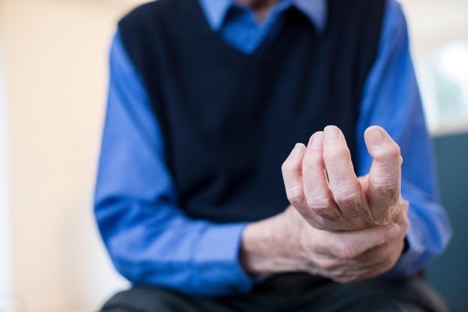By Aryan Magandia
Parkinson’s disease (PD) is one of those conditions that affects a person’s quality of life in many ways. This year, 2020, researchers estimate almost 1 million people will be living with this disease according to the Parkinson’s Foundation. Although approximately 60,000 people in the United States are diagnosed with this life-changing disease each year, it seems to affect men more than women. Studies show that men are 1.5 times more likely to have PD.
What is Parkinson’s Disease?
People with Parkinson’s disease face challenges with movement. It is a neurological disorder that happens when the brain produces less and less dopamine, a chemical in the brain referred to as the “feel-good neurotransmitter.” Dopamine is released in the brain during or after experiencing feelings of pleasure. For example, eating the forbidden bowl of ice cream or taking a cool shower after running a marathon. It is also responsible for improving mood, alertness and controls movement. People who believe they have this disease should seek medical advice, diagnosis or treatment immediately.
Most Common Symptoms of Parkinson’s Disease
Symptoms of Parkinson’s disease gradually develop. The symptoms may manifest differently from person to person. The most common symptoms include:
- shaky hands or tremors in the hands, arms, legs or jaws
- slow movements called bradykinesia
- muscle stiffness that affects your range of motion
- Problems with posture and balance that affects walking or standing
These are just a few PD symptoms that progressively get worse over time. Other problems that may develop as the disease progresses include the inability to perform routine tasks for daily living such as eating, bathing, dressing, talking and writing. Parkinson’s patients also often have symptoms around vision and bladder control. Although there is no cure for Parkinson’s disease, the good news is there are assistive devices to help patients perform daily activities.
Specially Designed Devices for Parkinson’s Patients
Patients with Parkinson’s disease may find performing certain everyday tasks challenging. Sitting down to eat, taking a bath or shower, getting dressed or going for a walk can be challenging for people with Parkinson’s, even dangerous. As we age, accidental falls become commonplace. However, people with Parkinson’s risk of falling is two times greater than the average older adult.
There is a simple solution to help people with Parkinson’s disease regain their sense of independence — to use specially designed adaptive devices made specifically for Parkinson’s patients. A few of those devices are listed below along with a brief description of what they do.
Eating and Drinking Aids for Parkinson’s Patients
There are several options for assistance with eating and drinking. A few of those options include eating with heavy weighted eating utensils or utensils with handles that swivel. Weighted eating utensils are designed to help steady the hand while utensils with swiveling handles help steady the eating utensil. Likewise with weighted drinking cups and cups with swiveling handles. The weight of the cup keeps the shaking hand steady and the swiveling handle keeps the cup steady when filled with liquid.
In addition to eating utensils and drinking adaptive devices, using inner-lip plates and bowls with non-skid bottoms are also options. For those having trouble getting food onto the eating utensil, adding plate guards will help. Another option is placing Dycem under plates and bowls. This special non-slip material keeps plates and bowls from sliding off the table.
Dressing and Grooming Aids for Parkinson’s Patients
Essential hand tremors associated with Parkinson’s disease make it challenging to button your shirt or brush your teeth. Just like the weighted eating utensils, there are weighted button aids and weighted universal holders. The weighted universal holder works with your toothbrush, razor, hair comb and hair brush. Just add any one of these personal grooming items to the weighted handle and it helps steady the hand for users to complete the task.
Bathing and Toileting Aids for Parkinson’s Patients
The best solution for bathing is to add grab bars or tub rails. Installation is usually easy and the devices are relatively inexpensive. Use the grab bars or tub rails to steady yourself while bathing. In addition, add toilet rails around the toilet or raised toilet seats to prevent accidental falls when using the toilet.
Mobility Aids and for Parkinson’s Patients
Parkinson’s patients who have problems with walking or standing, should consider investing in a mobility walker or rollator. They both are designed to help you steady yourself while walking or standing, and the rollator offers a convenient seat for resting.
These are just a few adaptive devices to aid Parkinson’s patients. The use of these enable users to maintain their independence to perform daily living activities for themselves. There may be times when assistance from a caregiver or family member is required. In those cases, don’t hesitate to ask for help.

